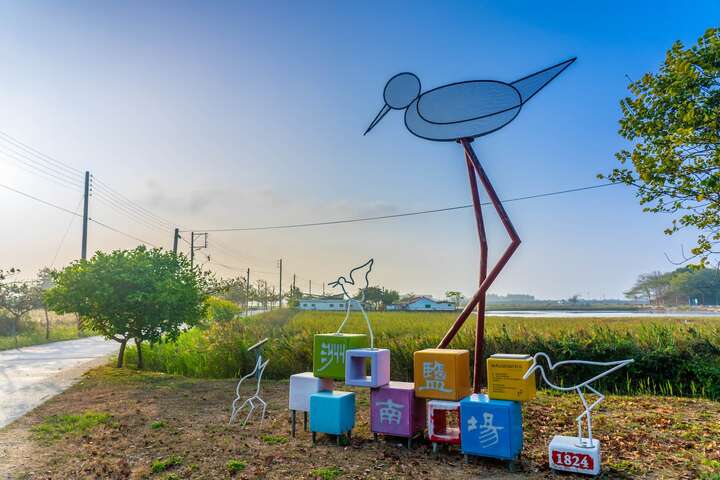Zhou Nan Salt Fields Introduction
Fishing and salt production flourished during the Qing dynasty, with "fishing and salt in abundance" being a beautiful scene of the past. In 1824, the Chonan Salt Field was established, leading to the "golden age" of Taiwan's salt industry. Over time, Taiwan's salt production shifted from local to import, and in 2002, the domestic salt production of "sun-dried salt" came to an end. To revive the rich salt field culture of Budai, the Budai Mouth Cultural Association envisions "Happy Salt Field Heart Village," adopting "environmental education/activity industry" as its sustainable management strategy, integrating salt production, life, and ecology. This revitalization has brought life back to the Chonan Salt Field, which had been abandoned for six years, reactivating it to serve cultural, tourism, and educational functions, allowing visitors to personally experience the old soul and new charm of the salt fields. The "Chonan Salt Field" is a "cultural salt field," while the adjacent Xinzhua Community (including Longjiang and Xinzhua Villages) is a "cultural salt village," aptly presenting the historical depth, local context, and everyday life of Budai's salt industry from cultural and daily living perspectives. The "Salt Gratitude Festival" is an important annual event held at the Chonan Salt Field, where salt workers used to prepare offerings during significant festivals to thank the earth and various deities for a bountiful salt harvest. Since 2008, the Salt Gratitude Festival has been held at the end of each year at the Chonan Salt Field to express gratitude to the land, merging traditional industrial culture and forming a significant contemporary cultural celebration.


























